When it comes to comparing the keeshond vs pomeranian, what are the main differences that separate these dog breeds, and what traits do they share? While both of these dogs have incredibly fluffy coats, there are a great deal of differences between them that you may not recognize at first.
In this article, we will compare and contrast everything you need to know about keeshonds and pomeranians so that you can learn to tell these breeds apart upon first glance. We will also address their ancestry, behaviors, and life spans to fully describe both breeds. Let’s get started and learn everything you need to know about these dogs now!
Comparing Keeshond vs Pomeranian
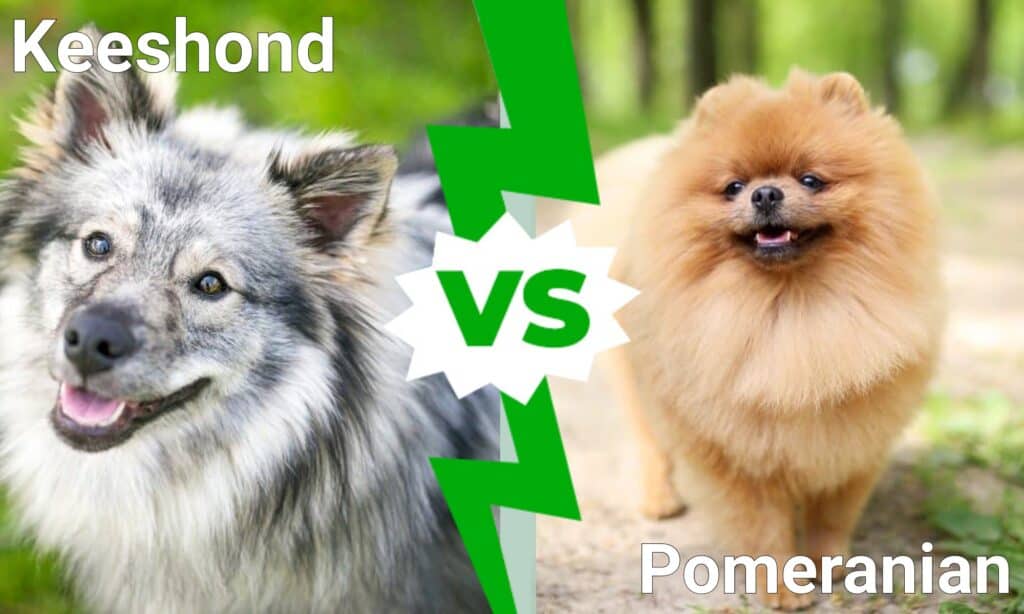
| Keeshond | Pomeranian | |
|---|---|---|
| Size | 17-18 inches tall; 35-45 pounds | 7-12 inches tall; 3-7 pounds |
| Appearance | Fluffy, double-coated fur found in dark or silver colorations. Dark and wise eyes with erect, triangular ears. Curled tail remains fluffy and they have a mane around their necks | Very fluffy fur is found in a variety of colors, including red, white, black, brown, and fawn. Very small ears and curled tail with a fluffy mane around the neck. Petite and compact, with large eyes |
| Ancestry | Bred in the 18th century to hunt mice on sailing ships; a companion dog for the common people bred from pomeranians and samoyeds | Descended from sled dogs, but bred into a smaller toy breed due to royal insistence. Not recognized as a purebred dog at its small size, though the breed was popularized in the 1990s |
| Behavior | Incredibly friendly and open, though still makes an excellent guard dog. Very good with families and children, and easy to train | Very good guard dogs, though they tend to bark more than is useful. Can be possessive of food and toys, and may not be suited for young children. Very good and loving companions |
| Lifespan | 13-15 years | 14-16 years |
Key Differences Between Keeshond vs Pomeranian

Pomeranians are found in more colors than keeshonds.
©Eva Sustar/Shutterstock.com
There are many key differences between keeshonds and pomeranians. The average keeshond is larger in both height and weight compared to the small pomeranian. Additionally, pomeranians come in more colors than keeshonds. The keeshond was bred to hunt mice on sailing vessels, but the pomeranian was prized by royalty for its companionship.
Let’s discuss both of these dog breeds in more detail now!
Keeshond vs Pomeranian: Size
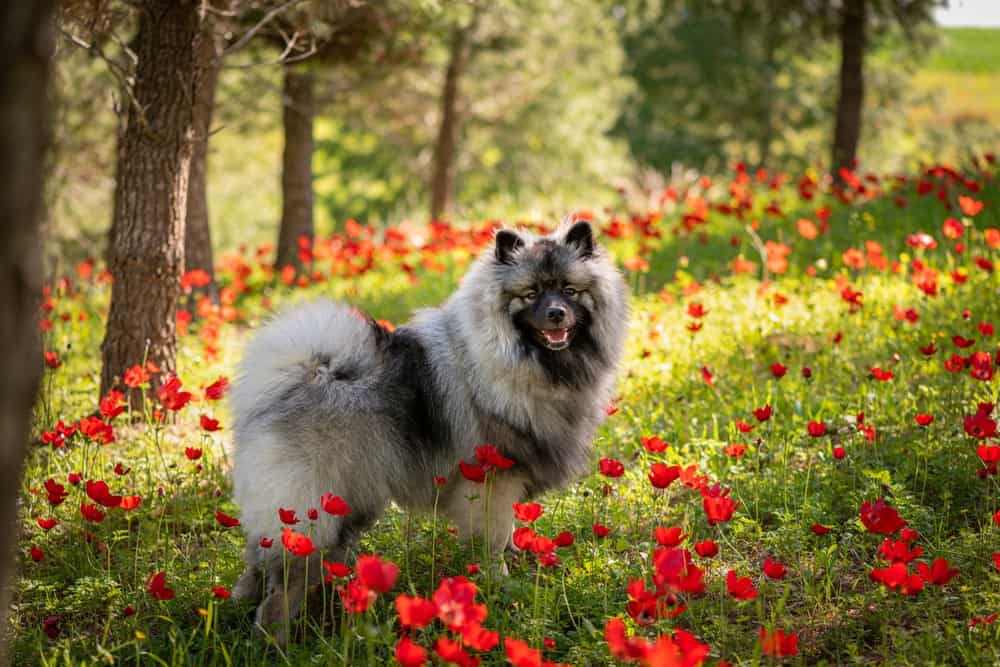
The keeshond was bred to hunt mice on sailing vessels, but the pomeranian was prized by royalty for its companionship.
©Doczahi/Shutterstock.com
You can easily tell the difference between a keeshond and a pomeranian by looking at their sizes alone. The keeshond is much larger in both height and weight compared to the pomeranian. But how much larger? Let’s take a closer look at the figures now.
The average keeshond measures 17-18 inches tall, while the pomeranian only measures 7-12 inches tall. Additionally, the pomeranian only weighs 3-7 pounds maximum, while keeshonds weigh 35-45 pounds, depending on the dog’s gender. That is a huge difference, and something to keep in mind if you are looking for a toy dog breed as opposed to a medium dog breed.
Keeshond vs Pomeranian: Appearance

The average keeshond measures 17-18 inches tall, while the pomeranian only measures 7-12 inches tall.
©iStock.com/FaST_9
The appearances of the keeshond and the pomeranian are extremely similar, though there are still some differences. For example, the keeshond coat only comes in silver or dark colors, while the pomeranian frequently comes in lighter shades such as cream and red. However, both breeds have very fluffy coats that resemble each other.
Keeshond vs Pomeranian: Ancestry and Breeding
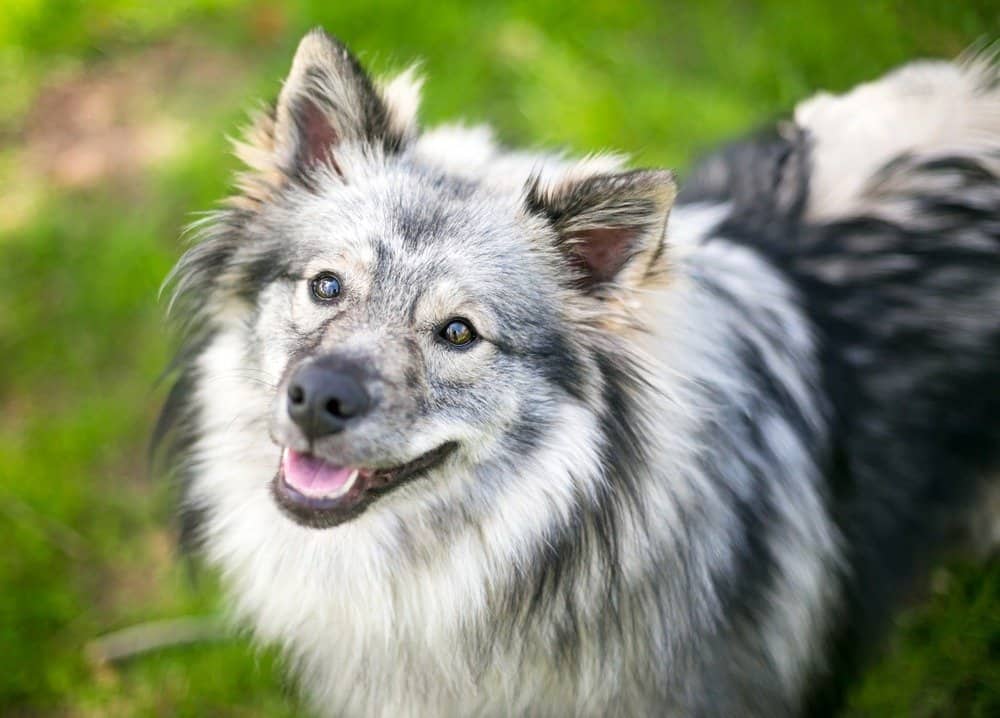
The keeshond is descended from pomeranians and samoyeds, while the pomeranian is descended from sled dogs.
©Mary Swift/Shutterstock.com
The ancestry and breeding of the keeshond and the pomeranian are very interesting and distinct. Ironically, the keeshond is descended from pomeranians and samoyeds, while the pomeranian is descended from sled dogs. Additionally, the pomeranian was bred for royal companionship, while the keeshond was bred to hunt mice on sailing vessels.
This puts the breeds in direct opposition to one another. The pomeranian was a favorite of Queen Victoria of England, while the keeshond was a symbol of Dutch revolution and patriotism, a dog for the common people. Despite them both being fantastic companion animals, their breed history makes them extremely interesting!
Keeshond vs Pomeranian: Behavior
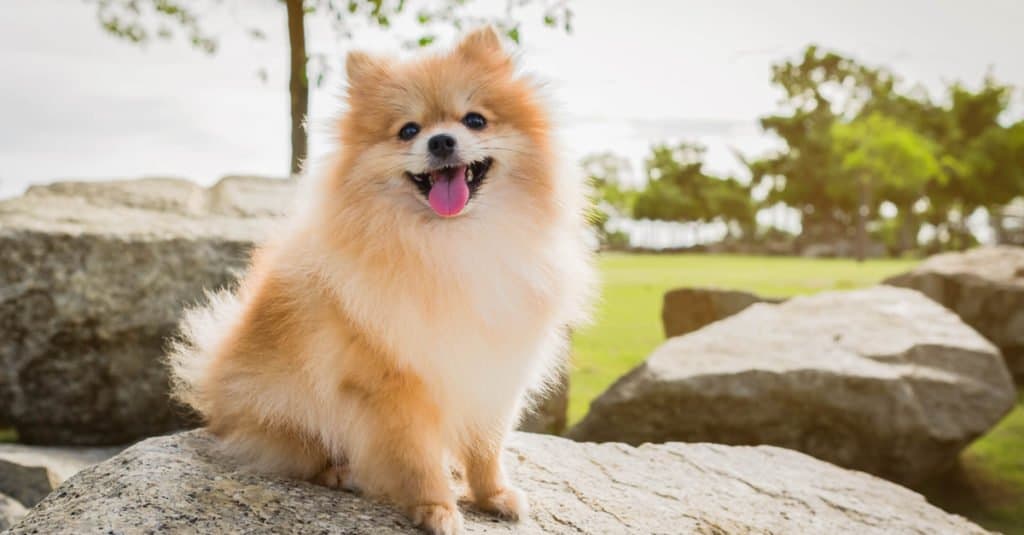
The keeshond is a much friendlier breed compared to the wary and antagonistic pomeranian.
©pattarawat/Shutterstock.com
The behaviors of the keeshond vs the pomeranian are different from one another, though it always depends on the individual breeding and training of your dog. However, the keeshond is a friendlier breed compared to the wary and antagonistic pomeranian. While both breeds make decent watch dogs, the pomeranian needs a bit more structure and training than the keeshond in that respect.
Additionally, keeshonds are better companions for families with young children, while the pomeranian prefers older adults. However, this isn’t to say that the pomeranian can’t be trained. This dog breed enjoys positive reinforcement and pleasing its owners. But pomeranians are more stubborn compared to keeshonds overall.
Keeshond vs Pomeranian: Lifespan
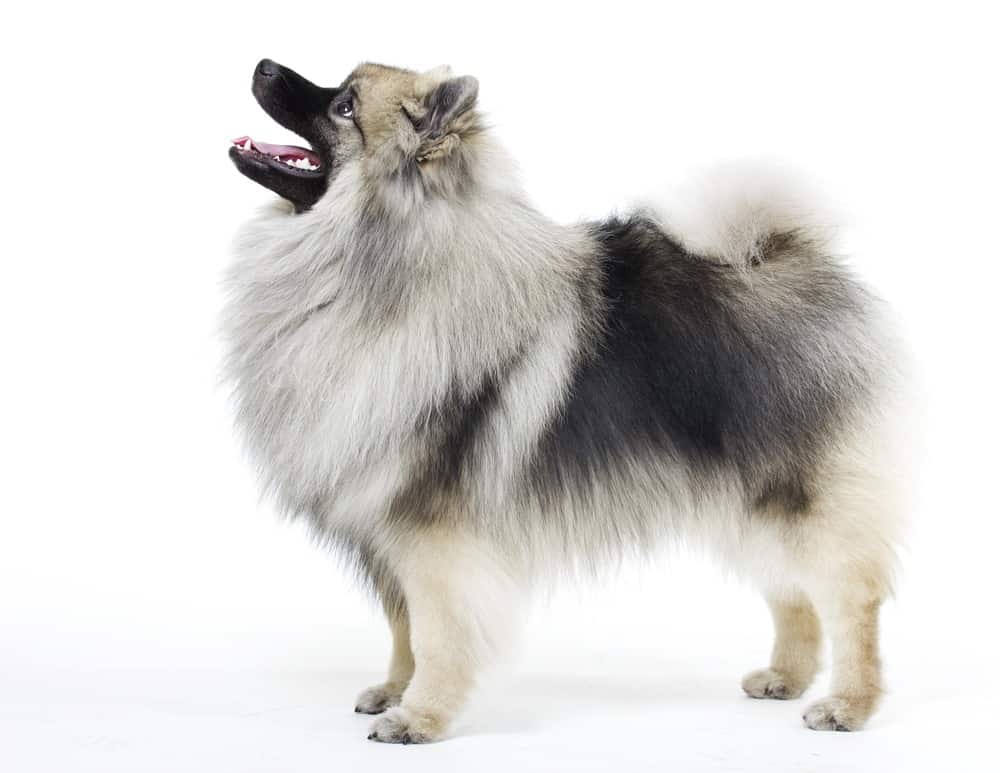
Given the size differences of both of these breeds, the pomeranian lives longer than the keeshond overall.
©Serova_Ekaterina/Shutterstock.com
A final difference between pomeranians and keeshonds lies in their lifespans. Given the size differences of both of these breeds, the pomeranian lives longer than the keeshond overall. However, the lifespan of any dog depends on the individual health, breeding, and care of the dog itself, so ensure that your new keeshond or pomeranian gets plenty of exercise and a well-rounded diet!
Looking closer at the figures, the average keeshond lives anywhere from 13-15 years, while the average pomeranian lives anywhere from 14-16 years. However, given the small size of pomeranians, they are at more risk for physical injury compared to the keeshond, so this is something to keep in mind.
The photo featured at the top of this post is © iStock.com/Nelli Faytilevich
Ready to discover the top 10 cutest dog breeds in the entire world?
How about the fastest dogs, the largest dogs and those that are -- quite frankly -- just the kindest dogs on the planet? Each day, AZ Animals sends out lists just like this to our thousands of email subscribers. And the best part? It's FREE. Join today by entering your email below.
Thank you for reading! Have some feedback for us? Contact the AZ Animals editorial team.






